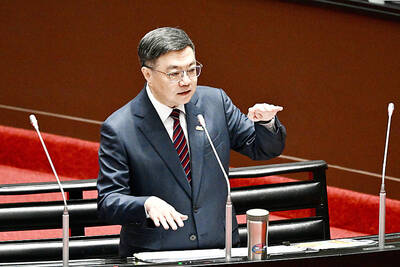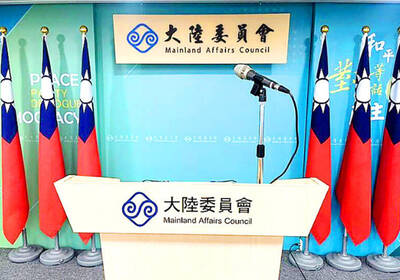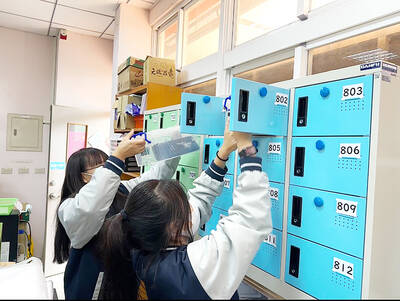Fewer young Taiwanese are employed, while the number of older workers has increased by more than 64,000 over the past three years, Ministry of Labor data showed, indicating the effects of societal aging.
The number of people contributing to the labor pension system aged 15 to 19, 20 to 24 and 35 to 39 fell from May 2020 to February, while the number of employed people in other age brackets increased, the data showed.
The Labor Standards Act (勞動基準法) stipulates that companies must deposit no less than 6 percent of the salary of each worker covered by the act into their pension fund account, including re-employed older workers who are already receiving pensions.

Photo: CNA
The number of young workers, defined by the ministry as those aged 15 to 29, fell by more than 53,000 over the past three years, the data showed.
Over the same period, the number of workers aged 30 to 44 increased by more than 22,000, the number of those aged 45 to 64 rose by more than 390,000 and the number of those aged 65 — the statutory retirement age — or older increased by more than 64,000, the data showed.
A ministry official yesterday said that Taiwan’s declining birthrate is reflected in the falling number of young people in the workforce.
The official said the first decline in the number of births occurred in the mid-1980s, with about 383,000 births in 1983, 346,000 births in 1985 and 309,000 births in 1986, before the numbers rose again to 314,000 births in 1987 and 342,000 in 1988.
Average monthly pension contributions have increased for all age groups over the past three years, with the 45-49 age bracket having the highest average of NT$50,714, while the average among 20 to 24-year-olds, at NT$27,035, was almost as low as the minimum monthly wage of NT$26,400, they said.
Workers aged 65 or older on average contributed NT$34,195, the official said.
The steepest increase was in the publishing, audio and video production, broadcasting, information and communications industry, at 11.87 percent, followed by the manufacturing industry at 11.77 percent, while the mining industry and the electricity and gas supply industry were the only two sectors in which the average monthly pension contributions declined, they said.
However, the service industry, which covers nearly 65 percent of the working population, has an average monthly pension contribution that is about 10 percent lower than industrial sectors, they added.
The data showed that as of February, the three industries with the highest average monthly pension contributions were the electricity and gas supply industry, at NT$63,669, followed by the financial and insurance industry at NT$60,606 and the publishing, audio and video production, broadcasting, information and communications industry at NT$59,541.
The average monthly pension contribution for the industrial sectors was NT$46,822, about 10 percent higher than that of the service industry, at NT$41,862, the data showed.
While the electricity and gas supply industry had the highest average monthly pension contributions, it declined 0.38 percent, while that of the mining industry declined 4.1 percent.
The official said it was mainly due to more workers at Taiwan Power Co (台電), CPC Corp, Taiwan (台灣中油) and other state-run companies retiring.
The Industrial sector not only had a higher average monthly pension contribution than the service industry, but its average salary increased 10.84 percent over the past three years, more than that of the service industry, in which salaries increased 7.7 percent on average.
The increase in average monthly pension contributions in the publishing, audio and video production, broadcasting, information and communications industry was mainly due to increases at computer programming and information technology companies, the official said.

NATIONAL SECURITY: The Chinese influencer shared multiple videos on social media in which she claimed Taiwan is a part of China and supported its annexation Freedom of speech does not allow comments by Chinese residents in Taiwan that compromise national security or social stability, the nation’s top officials said yesterday, after the National Immigration Agency (NIA) revoked the residency permit of a Chinese influencer who published videos advocating China annexing Taiwan by force. Taiwan welcomes all foreigners to settle here and make families so long as they “love the land and people of Taiwan,” Premier Cho Jung-tai (卓榮泰) told lawmakers during a plenary session at the Legislative Yuan in Taipei. The public power of the government must be asserted when necessary and the Ministry of

CROSSED A LINE: While entertainers working in China have made pro-China statements before, this time it seriously affected the nation’s security and interests, a source said The Mainland Affairs Council (MAC) late on Saturday night condemned the comments of Taiwanese entertainers who reposted Chinese statements denigrating Taiwan’s sovereignty. The nation’s cross-strait affairs authority issued the statement after several Taiwanese entertainers, including Patty Hou (侯佩岑), Ouyang Nana (歐陽娜娜) and Michelle Chen (陳妍希), on Friday and Saturday shared on their respective Sina Weibo (微博) accounts a post by state broadcaster China Central Television. The post showed an image of a map of Taiwan along with the five stars of the Chinese flag, and the message: “Taiwan is never a country. It never was and never will be.” The post followed remarks

Proposed amendments would forbid the use of all personal electronic devices during school hours in high schools and below, starting from the next school year in August, the Ministry of Education said on Monday. The Regulations on the Use of Mobile Devices at Educational Facilities up to High Schools (高級中等以下學校校園行動載具使用原則) state that mobile devices — defined as mobile phones, laptops, tablets, smartwatches or other wearables — should be turned off at school. The changes would stipulate that use of such devices during class is forbidden, and the devices should be handed to a teacher or the school for safekeeping. The amendments also say

CONSISTENT COMMITMENT: The American Institute in Taiwan director said that the US would expand investment and trade relationships to make both nations more prosperous The US would not abandon its commitment to Taiwan, and would make Taiwan safer, stronger and more prosperous, American Institute in Taiwan Director Raymond Greene said. “The US’ commitment to Taiwan has been consistent over many administrations and over many years, and we will not abandon our commitment to Taiwan, including our opposition to any attempt to use force or coercion to change Taiwan’s status,” he said in an exclusive interview with the Liberty Times (the sister newspaper of the Taipei Times) on Friday last week, which was published in the Chinese-language newspaper yesterday. The US would double down on its efforts